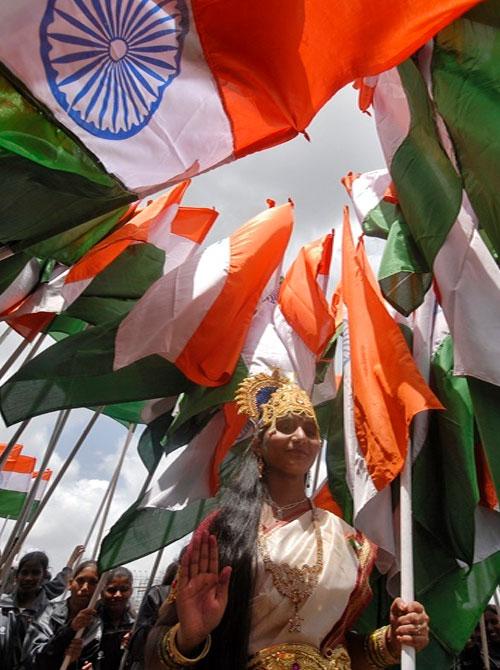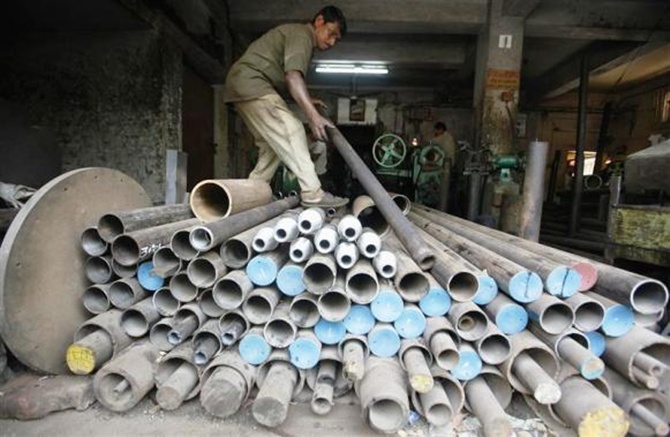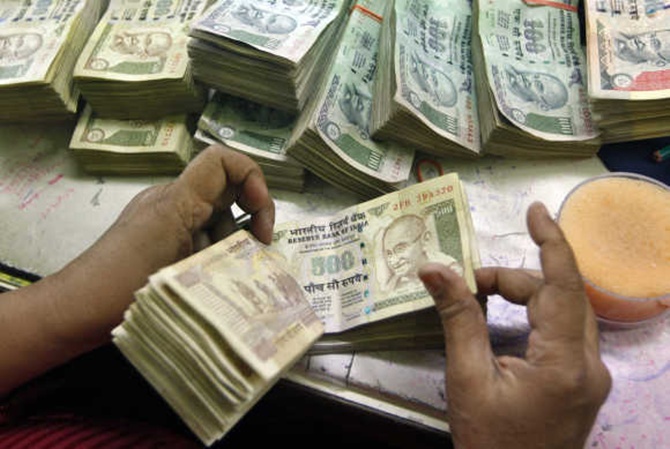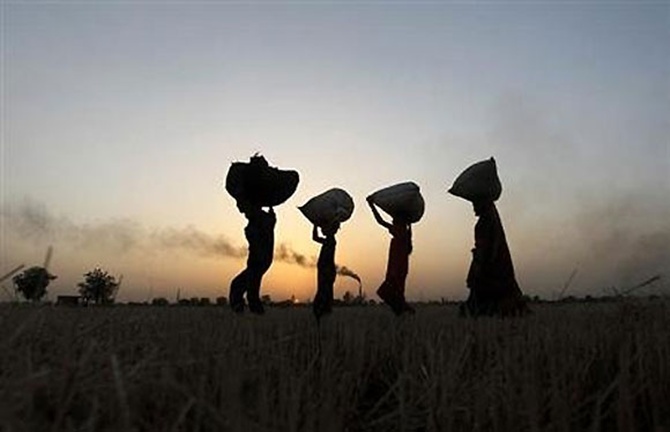Photographs: Krishnendu Halder/Reuters Madan Sabnavis
While UPA has been more pro-farmer, and delivered better GDP growth while the NDA was steadier on the fiscal and industrial side, says Madan Sabnavis.
As elections draw close, it has become a part of the propaganda for each party to claim that the country has fared better during its regime.
If we move beyond the rhetoric and take a look at the basic concept of such comparison, the approach could be flawed.
Economic indicators cannot be linked to a regime, because, frankly, policies implemented in one regime will work with a lag. Similarly, a drought or a global financial crisis can strike a government hard, where it may have little control.
Liberal trade policies pursued will impact the current account deficit (CAD) at a different point of time until they are rolled back. Therefore, such comparisons tend to be controversial and the conclusions drawn could be a case of contrived serendipity.
Yet, for the sake of academic argument, it is still worth examining how governments have fared in the last 15 years or so in terms of economic performance.
...
UPA vs NDA: Who helped Indian economy the most?
Photographs: Reuters
The National Democratic Alliance (NDA) government ruled from FY00-04, the United Progressive Alliance (UPA)-1 reigned between FY05-09, and UPA-2 from FY10-FY13 (FY 14 is still on). UPA-2 is different from UPA-1 not just because of the composition of the alliance, but also because of the controversies that were associated with the regime.
Performance numbers have been averaged for each period on an annual basis rather than compound growth rates to eschew end-points biases.
The table has placed the variables in a specific pattern. The first six variables are areas where UPA-1 has superior results to the NDA. But also quite significantly, in five of the six parameters used here, UPA-2 was lower than that of UPA-1. Agriculture was the exception.
Again, within this block of six variables, UPA-2 was clearly better than the NDA on three counts: gross domestic product (GDP), agriculture and power. It was higher in case of capital formation, though the NDA also did fairly well.
But the NDA scored better than UPA-2 in terms of industrial growth and marginally better in fiscal deficit. In case of debt to GDP ratio of the central government, the NDA did better than UPA-1, though it was inferior to UPA-2.
...
UPA vs NDA: Who helped Indian economy the most?
What are the conclusions that can be drawn here? First, the UPA has been more inclined towards agriculture during its two tenures, hence the resilience we have witnessed in output numbers has been an achievement.
Second, capital formation growth has been higher in the UPA reign, though the second tenure has definitely seen a slowdown that can be attributed to both lower GDP growth, that is demand, as well as the controversies that have consumed administrative time.
Third, UPA-1 brought in some economies in industrial growth, but that has not been maintained in the last four years. Quite clearly, whichever government takes over, the focus should be on reinvigorating this sector.
Fourth, fiscal indicators show clearly that UPA-2 has moved away from prudence unlike UPA-1 and the current focus of the finance minister on containing this number is laudable, but ideally should be achieved not through project expenditure cuts but control on non-development expenditure.
...
UPA vs NDA: Who helped Indian economy the most?
Photographs: Reuters
Fifth, the control, of the debt to GDP ratio is an achievement under these conditions since this is one indicator that the world is also watching closely. Last, GDP growth has also followed an inverted "v" pattern, rising during UPA-1 and declining in UPA-2 (the number will be even lower if the fifth year is considered).
Let us look at where the NDA regime has been more successful. First, on inflation, the performance has been much better with the consumer price index inflation number going lower than the wholesale price index.
Quite clearly, the pro-farmer pricing policies followed by the UPA has probably achieved better crop results, but has affected the cost of living of the common man, which is critical when it comes to elections.
Second, in terms of CAD, the NDA managed better with a surplus that deteriorated sharply during UPA-2. The liberal import policy was responsible for this trend. However, remedial measures have been invoked of late that will help to improve the situation.
...
UPA vs NDA: Who helped Indian economy the most?
Photographs: Reuters
Last, the exchange rate has done better here with a limited depreciation. UPA-1 had to contend with high appreciation too and the currency was more volatile.
For the NDA, standard deviation was 4.2 per cent, while for the UPA it was 9.1 per cent and 7.2 per cent respectively.
The UPA can definitely take credit for higher amounts of foreign direct investment and foreign institutional investors that came in during their regimes, though this is more of global factors at play than specific action from within.
Therefore, these variables have not been included. In this context, a surprising outcome has been how the country has fared with regards to the governance - the Corruption Perceptions Index of Transparency International.
...
UPA vs NDA: Who helped Indian economy the most?
Photographs: Reuters
The index, though low, has improved almost continuously from 2.7 in 2001 to 3.6 (out of 10) in 2012. This indicates that notwithstanding the controversies in the last couple of years, the nation has progressed on this score.
A tempting conclusion is that what came out in the open was already known and on the aggregate things have only been improving. The same holds when it comes to the Human Development Index that shows an improvement in score from 0.461 in 2000 to 0.547 in 2011. In both these cases, India's rank remains very low.
On balance, it looks like the performance has been quite even. The NDA has done better on inflation and managing the external account and also was steadier on the fiscal and industrial side.
The UPA has been more pro-farmer, and delivered better GDP growth and ushered in higher investment. More importantly, the country is silently moving up the ladder in terms of governance and human development, which is comforting.








article